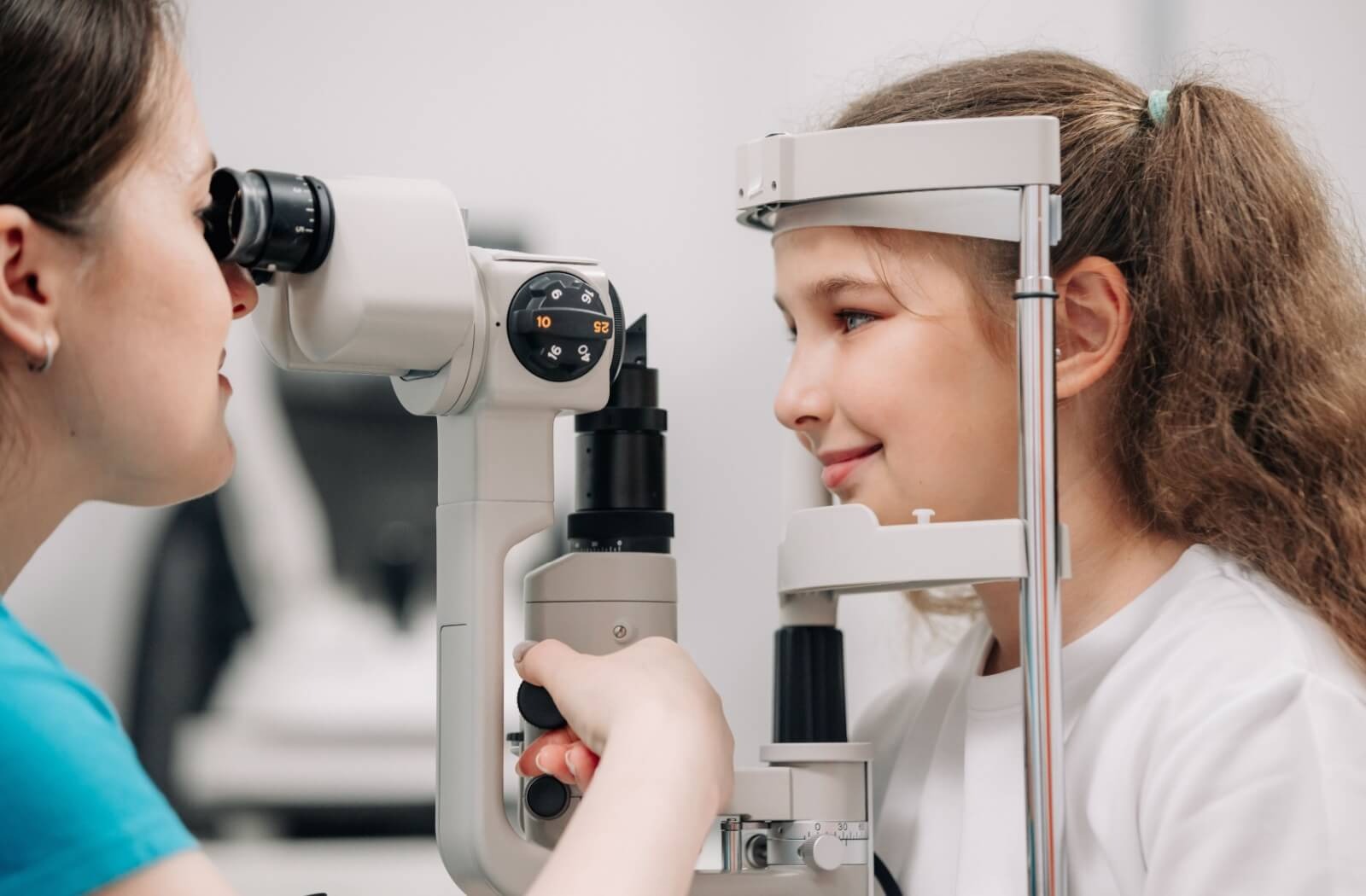Arizona's Vision Eye Care Center
Opening Hours
Mon-Thu: 9:00AM - 6:00PM Friday: 8:00AM- 5:00PM
Our Location
15215 S. 48th Street #180 Phoenix, AZ 85044
Call NOW
When Should Children Get Their First Eye Exam?
Introduction
Children should have their first comprehensive eye exam between 6 and 12 months of age. Your child's vision develops rapidly during their first year. Early detection of eye problems can prevent serious issues later. Many parents miss this crucial first exam.
Our team at Arizona's Vision Eye Care Center has helped thousands of Phoenix families protect their children's vision. We understand the importance of catching vision problems early when treatment works best.

This guide will show you exactly when your child needs eye exams and what signs indicate vision problems. You'll learn how to protect your child's eyesight from infancy through school years.
Exam Schedule for Children's Eye Exams
Children need regular eye exams at specific ages to ensure proper vision development. The schedule starts in infancy and continues through school years. Early detection leads to better treatment outcomes.
First Exam (6–12 Months)
Babies should have their first eye exam between 6 and 12 months old. This early exam checks for basic eye health and development. Doctors look for problems like eye misalignment or serious vision issues.
Second Exam (Age 3)
Children should have their second comprehensive eye exam around age 3. This exam evaluates visual acuity and eye coordination. Doctors can detect common childhood vision problems at this age.
Third Exam (Before Starting School)
Children need another eye exam before entering kindergarten, around age 5-6. This exam ensures your child can see clearly for learning. School success often depends on good vision.
Ongoing Exams
Children with glasses or contacts need yearly eye exams. Kids without vision problems should visit every two years. Regular checkups catch new issues before they affect learning.
When to Seek an Eye Exam for Children?
Parents should watch for warning signs that indicate vision problems. These signs require immediate attention. Early intervention prevents learning difficulties and other problems.
Frequent Headaches
Children with vision problems often complain about headaches. These headaches typically occur after reading or screen time. Headaches may signal eye strain from poor vision.
Holding Objects Close
Children who hold books or devices very close may have vision problems. This behavior compensates for difficulty seeing clearly. Normal reading distance is about 16 inches.
Squinting or Eye Rubbing
Excessive squinting or eye rubbing indicates vision difficulties. Children squint to see more clearly. Frequent eye rubbing may signal eye fatigue or irritation.
Head Tilting
Children who tilt their head to see better may have vision problems. This position helps them focus better. Head tilting compensates for vision deficiencies.
Misaligned Eye
An eye that wanders or appears misaligned needs immediate attention. This condition called strabismus affects depth perception. Early treatment prevents permanent vision loss.
Difficulty Paying Attention or Trouble with Schoolwork
Vision problems often cause concentration issues and poor school performance. Children struggle to see the board or read books. Vision issues can be mistaken for learning disabilities.
Recommended Age for a Child's First Eye Exam
Medical experts agree on when children should first see an eye doctor. These guidelines help parents schedule appropriate care. Following these recommendations prevents vision problems.
American Academy of Ophthalmology Guidelines
The American Academy of Ophthalmology recommends first eye exams between 6-12 months. They suggest the second exam at age 3. School-age children should have exams every 1-2 years.
Arizona and Phoenix-Specific Eye Exam Recommendations
Arizona law requires vision screenings for public and charter school students. Screenings occur at school entry, third grade, and seventh grade. More than one-quarter of Arizona school children have undetected vision issues.
First Things First Arizona Vision Screening Advice
First Things First Arizona reports only one-third of children aged 0-5 receive vision screenings. Less than one-fifth receive full eye exams. Early detection dramatically improves treatment success rates.
The Importance of Eye Care in Children
Good vision directly impacts a child's development and learning abilities. More than one in five preschool children has a vision disorder. Vision problems can affect reading, sports, and social interactions.
What to Expect During Your Child's Eye Exam
A pediatric eye exam is painless and often fun for children. The doctor will check visual acuity, eye alignment, and overall eye health. Special techniques make testing possible even for infants.
Conclusion
Regular eye exams starting between 6-12 months are essential for your child's vision health. Following the recommended schedule helps catch problems early when treatment works best. Vision screenings detect issues that could affect learning and development.
At Arizona's Vision Eye Care Center, we specialize in gentle, thorough eye exams for children. Our Phoenix team makes the experience comfortable for kids of all ages. We understand children's unique vision needs.
Contact us today to schedule your child's eye exam with our experienced team. Your child deserves the gift of clear vision for a lifetime of learning and success.